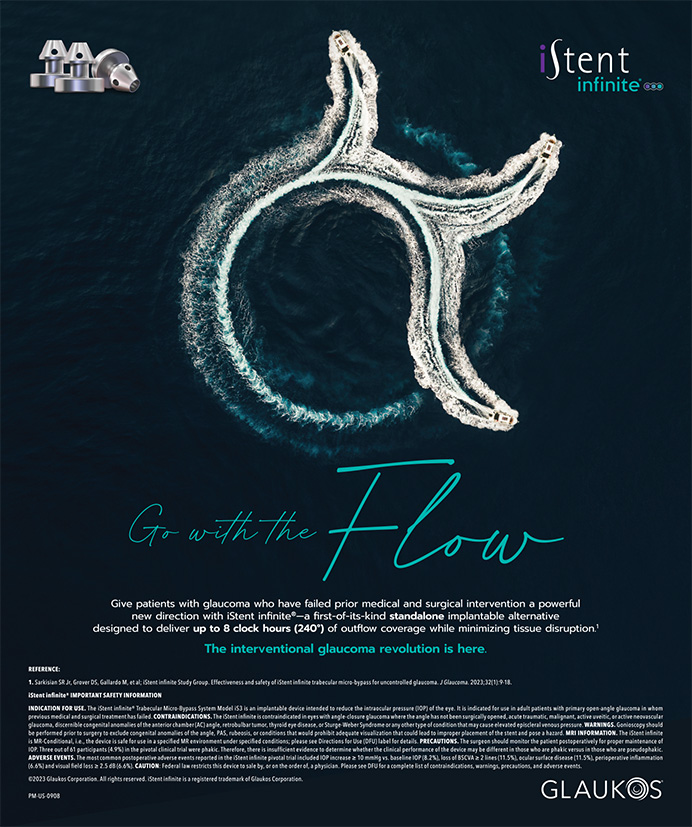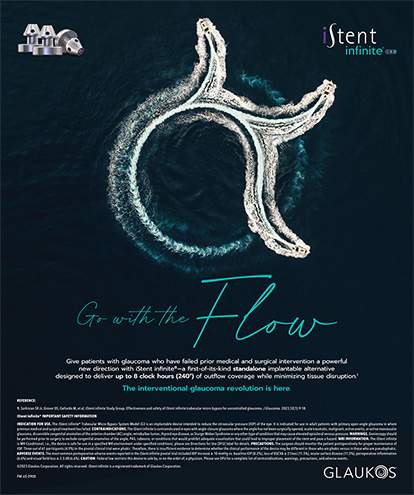Refractive surgeons evolve. We change our technique every few months or years in order to provide the best care to our patients. These changes, of course, necessitate our selling the new technique to prospective patients. Presented with a successful procedure and supporting data, candidates will likely accept our suggestions.
The most recent evolutions in my surgical practice were my transition back to PRK from LASIK and my move from Louisiana to New York. This article shares my rationale for changing procedures and how I position PRK in a competitive local market.
WHY PRK?
What piqued my interest in a possible return to surface ablation were the results from the studies of CustomCornea (Alcon Laboratories, Inc., Fort Worth, TX) for LASIK and PRK in 1999. This research represented the first time that wavefront-based laser corrections were performed in the US, and I had the honor of being the first surgeon in the US to perform customized laser surgery. With absolutely no corrective factors or changes in algorithms, the first 20 US patients achieved a significant increase in their BCVA after LASIK with CustomCornea (Figure 1). The subjects who underwent PRK attained an even more dramatic improvement in their BCVA (Figure 2). Based on these results (data on file with Alcon Laboratories, Inc.), I decided to convert to 100 wavefront-driven surface ablations in my practice.
Other investigators such as David Tanzer, MD, at the Naval Medical Center in San Diego (data on file with Advanced Medical Optics, Inc. [Santa Ana, CA]) and Daniel Durrie, MD, of Overland Park, Kansas (data on file with Alcon Laboratories, Inc.), have also demonstrated excellent results with PRK compared with LASIK. Wallau and Campos presented similar findings from their comparison of customized PRK and LASIK.1
MY TRANSITION
In New Orleans, I was the sole owner of an ophthalmic practice. I had a staff of 14, including a medical ophthalmologist. I was the only surgeon, and I controlled everything, from marketing efforts to how the office was run. My employees were knowledgeable about PRK and could answer any question patients had. Then, Hurricane Katrina struck.
I moved to New York and joined the Ophthalmic Consultants of Long Island, which has six offices, 18 ophthalmologists, and two optometrists. One third of the partners perform refractive surgery, and pricing is standardized across the practice.
I conducted a "SWOT" (strengths, weaknesses, opportunities, threats) analysis of my situation. Regarding strengths, I had joined a prestigious, well-run group. I was the only refractive surgeon in my large office 90 of the time, a situation that facilitated the teaching of staff and patients about PRK. Moreover, my patient population was more affluent than in New Orleans. Regarding weaknesses, there are lots of refractive surgeons (and thus a great deal of competition) on Long Island. I had none of my old referral sources. I was offering a procedure that other local ophthalmologists were not and that therefore might be considered odd.
I realized that I had an opportunity to distinguish myself by offering PRK in a crowded field, because I had developed an effective regimen for controlling postoperative pain (see Dr. McDonald's Regimen for Managing Pain From PRK). The threat or challenge was to sell PRK without denigrating LASIK. I recognized the inadvisability of negativity about a procedure that I once offered, I might offer again, and my colleagues were currently performing.
POSITIONING PRK
Raising Awareness in the Community
I donate refractive surgeries to high-profile charitable events. I favor charitable auctions at which I can get on a microphone and tell attendees about myself, my practice, and PRK. If possible, I have one of my happy, postoperative patients attend so that he may answer people's questions.
I tell attendees that I believe PRK is currently the best available means of visual correction. Sometimes, listeners then ask me if they should wait for the next procedure. My favorite response involves an analogy to a car. I explain that they are hardly likely to wait 10 years to buy an automobile, because the currently available models function beautifully.
Counseling Patients
My approach is to inform patients that LASIK is a wonderful procedure that I have performed thousands of times and that advanced surface ablation or PRK is a little better. I provide an honest review of the pros and cons of both forms of laser vision correction. Among other information, I tell patients that PRK corrects vision without an incision. During the last 4 years, only one person has expressed a preference for LASIK.
Educating the Staff
The staff of an ophthalmic practice remembers the original PRK procedure, the severe pain patients experienced, and their vision's slow return. When I began practicing in New York, I made sure to take the time to educate my staff about the current PRK procedure as well as how I manage patients' pain postoperatively and speed their visual recovery.
After watching me perform PRK on my first few patients on Long Island, staff members were impressed by patients' lack of postoperative pain and the clinical outcomes—UCVAs of 20/16 or 20/10 in most cases. Some of the staff expressed an interest in undergoing PRK themselves, and I was more than happy to oblige. Now, not only can a number of staff members at my office talk knowledgeably about PRK to patients, but they can also share their own positive experiences.
Educating Oneself
I always ask patients why they chose me for their surgery, because their answers are often instructive. Sometimes, patients are attracted by the no-cutting aspect of PRK. Others may be impressed by the office itself or members of my staff. One patient recently said she selected me because I was the only one of the seven surgeons she visited who washed her hands when I entered the room.
I also continue to refine my perioperative regimen and to explore new iterations of laser vision correction. Currently, I am looking into transepithelial, customized PRK and sub-Bowman's keratomileusis. In the words of Charles Darwin, "It is not the strongest of the species that survives, nor the most intelligent, but the one most responsive to change."2
Marguerite McDonald, MD, is in private practice at Ophthalmic Consultants of Long Island in Lynbrook, New York, and is Clinical Professor of Ophthalmology at Tulane University Health Sciences Center in New Orleans. She is a consultant to Advanced Medical Optics, Inc., and Allergan, Inc. Dr. McDonald may be reached at margueritemcdmd@aol.com.


